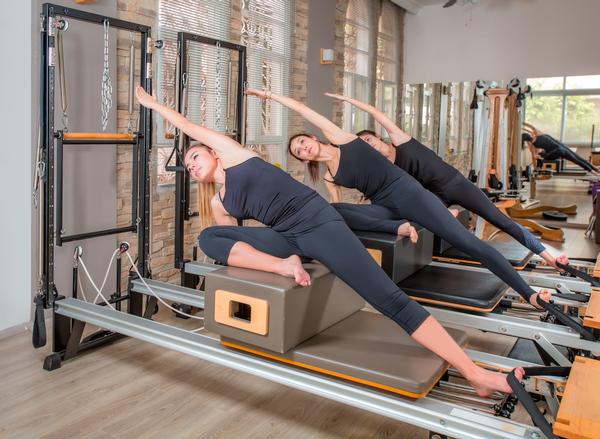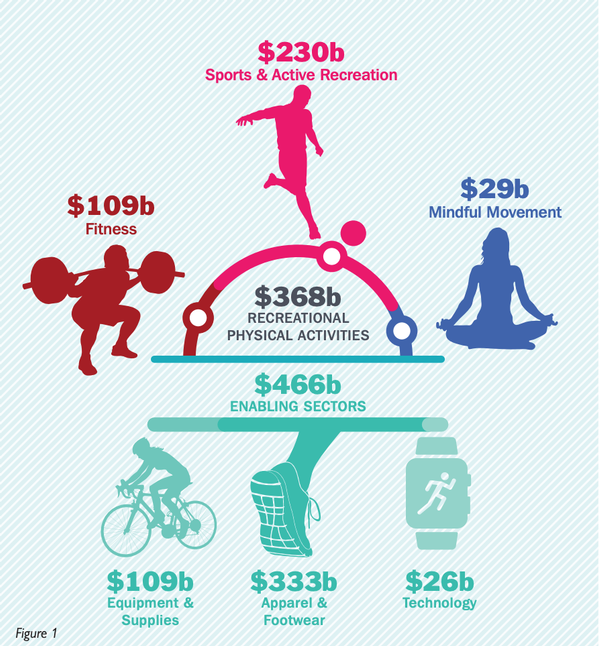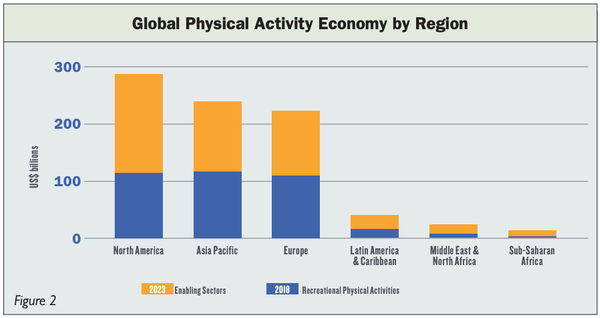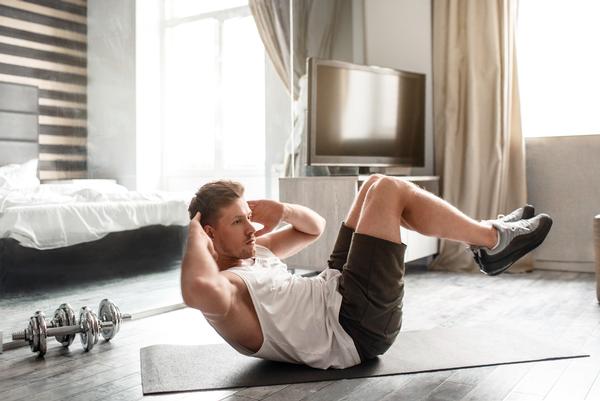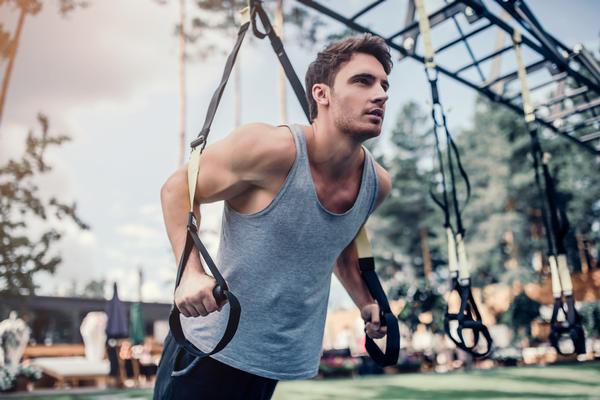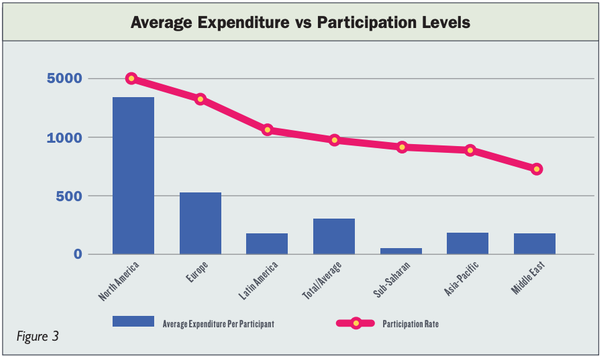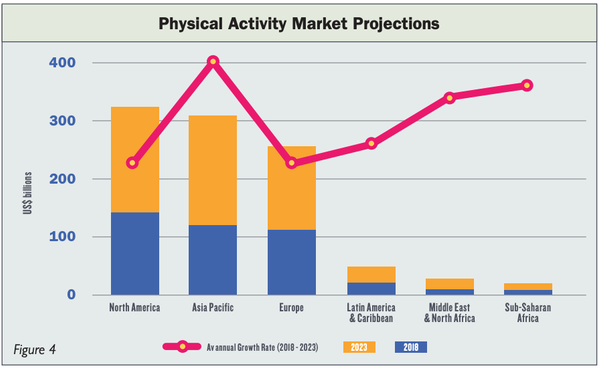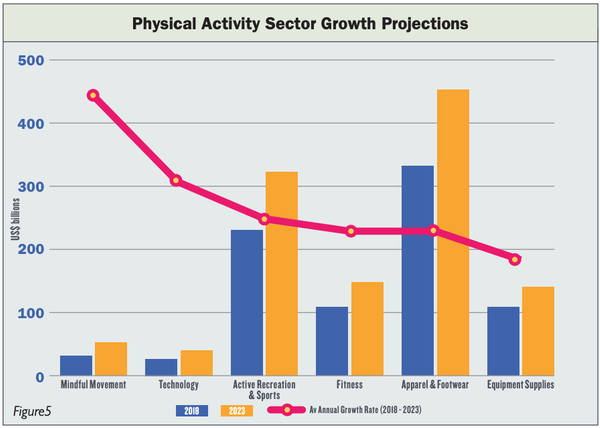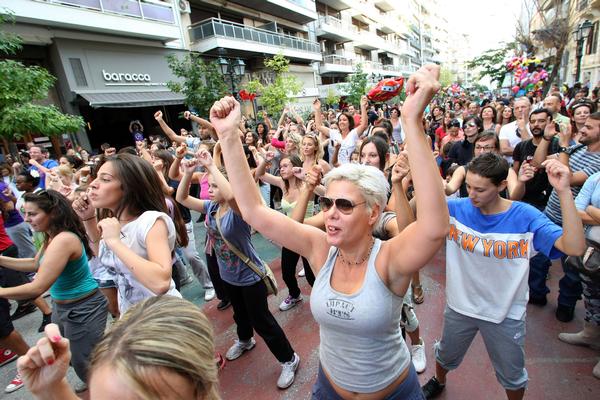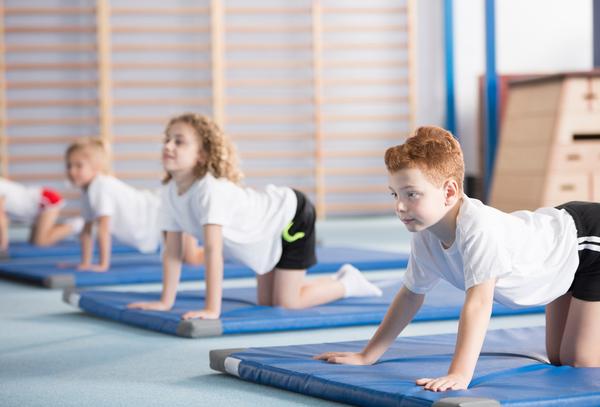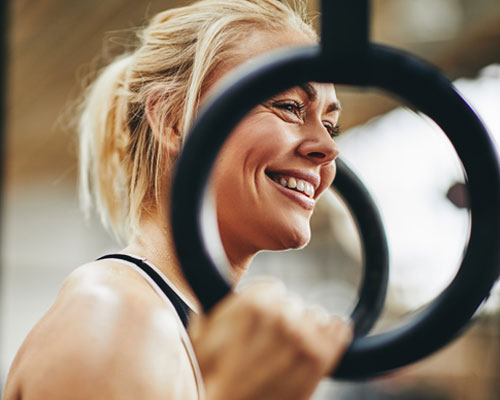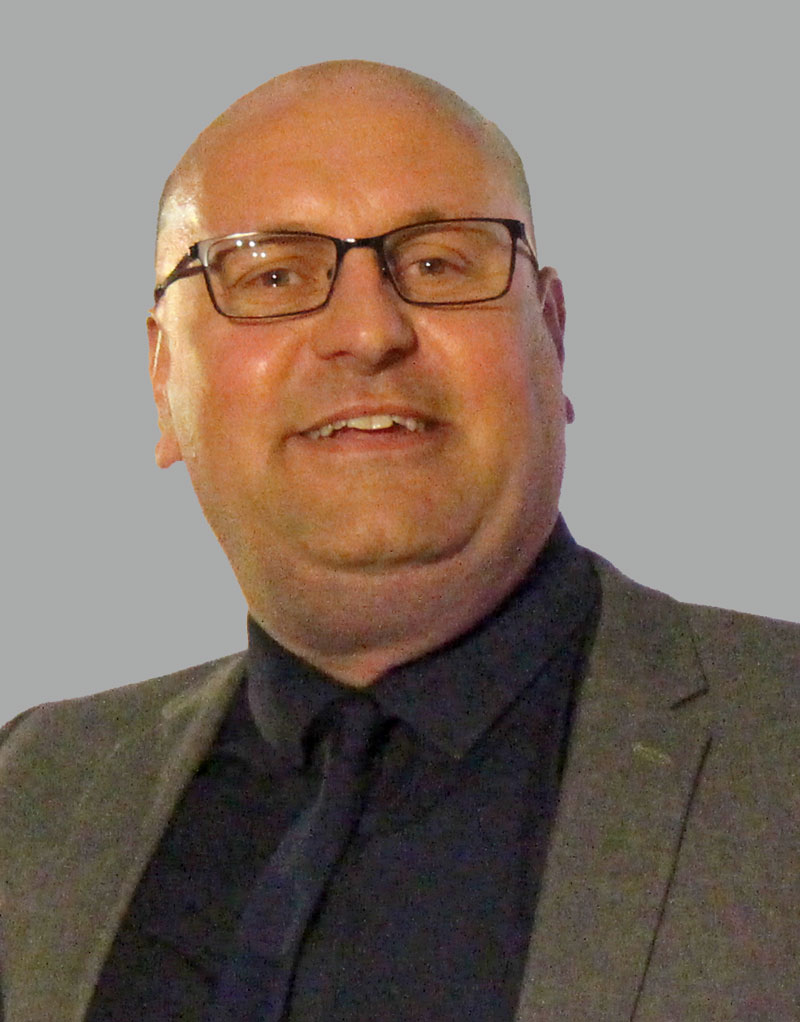features
Body and soul
Leonor Stanton analyses the Global Wellness Institute’s latest data on the global physical activity market
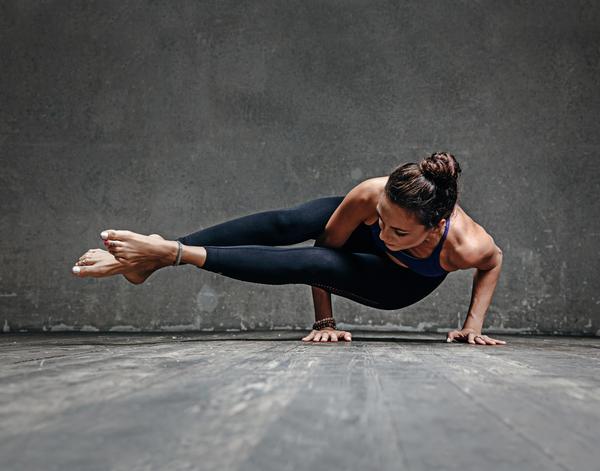
The Global Wellness Institute’s (GWI) Move to be Well: The Global Economy of Physical Activity report measures the “size of the global physical activity market, its key segments, highlights emerging trends, business models, cross-country variations, and public/non-profit initiatives that can help bring physical activity to all.”
The Institute estimates that the ‘Global Wellness Economy’ is worth US$4.5 trillion. This comprises US$828bn generated by the “Recreational Physical Activity” market – the focus of the “Move to be Well” study, published in October 2019.
Whilst this is a significant market, the study’s authors – Katherine Johnston and Ophelia Yeung, Senior Research Fellows at GWI – are keen to stress that this should not hide the relatively significant levels of inactivity in our society estimated at between “one-quarter to one-third of adults” by the World Health Organisation.
This study identifies that around “35% of the population participates in recreational physical activities”, which includes fitness, sports & active recreation, and mindful movement, including yoga, tai chi, qigong, Pilates, barre, gyrotronic and Feldenkrais (Figure 1). The study excludes exercise undertaken as part of domestic chores, work or transport-related.
Whilst previous GWI studies have measured “fitness”, this report has widened the scope to include all forms of recreational “physical activity”. Ophelia Yeung supports this wider definition, saying: “there are just so many more ways to be active than purely working out in the gym”.
REGIONAL DIFFERENCES
The study breaks down the US$828bn global physical activity economy by region. This shows that North America, Asia-Pacific and Europe are significantly larger than the three other global physical activity markets in terms of expenditure.
North America has a particularly large “enabling sector” (equipment & supplies, apparel & footwear and technology) at US$171.2bn compared with the next largest in Asia-Pacific at US$125.5bn (Figure 2).
The average expenditure globally per participant averages at US$306, of which US$136 is spent on activities and US$172 on equipment and services. There is however a huge variation in the average spent per participant globally (Figure 3).
North America has the highest participation levels (51 per cent) and, significantly, the highest expenditure overall per participant (including equipment) at US$1,345. There is an interesting similarity in the average expenditure per participant in three regions: Middle East/North Africa (US$181), Asia-Pacific and Latin America/Caribbean both at US$176 on average per participant. Whilst Sub-Saharan Africa has the lowest expenditure per participant (US$45), its participation levels (31 per cent) are nevertheless only just below the global average (33 per cent).
Indeed, “a large portion of the global population, especially in less wealthy countries, participates in recreational physical activities without spending much money.” Recreational football is an example of a low-cost activity and indeed much of the growth in the mindful movement sector, of which yoga is the most popular, is increasingly being practised “online, at home, and [via] low-cost methods of practising” thus “expanding access and lowering cost barriers to participation”.
According to Ophelia Yeung, “Our projections for growth outperform the overall economy growth forecasts as we expect global consumers’ awareness of the benefits of exercise on their health to continue increasing”. The study provides five-year future growth projections to 2023 in terms of market value.
Asia-Pacific and Sub-Saharan Africa are the regions forecast to grow most at 9.2 per cent and 8.2 per cent, respectively, albeit in Africa from a low base. Growth in the more mature markets of North America and Europe is nonetheless expected to be at just over 5 per cent annually between 2018 and 2023 (Figure 4).
In terms of sector growth, the two smallest sectors – mindful movement, currently worth US$29.1bn, and technology, worth US$26.3bn – are forecast to grow between 2018 and 2023 at 12.4 per cent and 8.6 per cent, respectively. All other sectors are projected to grow annually at between 5 per cent and 7 per cent (Figure 5).
The study concludes that “the irony in these projections is that ever-increasing consumer spending on physical activity is not necessarily the solution to the global crisis of physical inactivity. From a public health perspective, the aim is simply to get more people more active, more often regardless of whether they spend more money while doing so.”
Fortunately, the projections in most countries reflect not only higher levels of expenditure amongst those already participating in sports, but also higher participation levels, albeit at varying rates. The authors believe that “investment in public infrastructure, parks, outdoor gyms, school programs, physical education etc is critically important” in order to increase participation levels overall.
NO TIME OUT
A Global Wellness Institute review of over 75 studies in 60 different countries reveals that the top barrier to physical activity in both adults and the young is “lack of time”.
According to Katherine Johnston, “careful consideration of the barriers to exercise is critical in order to identify opportunities and also to encourage further participation”. The report suggests a variety of ways to overcome these barriers:
Flexibility
This can be provided to counter lack of time and convenient facilities by offering apps and digital services where exercise can be undertaken in any location (e.g. at home, in hotels or rural areas) in a variety of languages via videos, mobile apps, “exergaming” (fitness video games) via live-streamed or pre-recorded classes with variations in level, intensity and length.
Fun
Adding ‘fun’ to exercising. Examples range from off-the-beaten track walks in London led by trained fitness guides combining tourism with exercise to bikes, skates and Nordic walking poles at Zurich airport.
Adding interest to exercise has been done by combining exercise with music, e.g. in Zumba classes, dance as exercise, working out as part of a community with inspiring teachers or social networks, e.g. in churches (also to address increasing loneliness), and by leveraging technology which incorporates competition, games, rewards, performance reviews and leaderboards. Dancing (plaza dancing in China to social dancing in Latin America), enjoyed by millions, is great exercise, fun and involves no spending.
Cultural changes
Adding movement to our increasingly sedentary lifestyles by incorporating movement into daily life either via workplace programmes, incentives and subsidies, treadmill and stationary bike desks or providing paid time during the working day to work-out.
Co-locating senior and children’s playground facilities, thus enabling parents and grandparents to exercise as they look after children is another example.
Urbanisation has led to more sedentary lifestyles but the report identifies a “burgeoning wellness real estate movement around the world [which] is helping to embed physical activity in the built environment in many different ways”, such as attractive staircases, miles of trails, walkways, dedicated bike/jogging lanes, sponsored programming, activities and events that encourage movement and socialising and being part of a community.
Health and fitness clubs are also opening up as part of new residential developments, sometimes for the exclusive use of residents.
School
The daily habit should begin at school, currently lacking to varying degrees in many countries, thus the report concludes “an expanded focus on PE in schools for all children, across all regions, may be one of the highest-impact ways to increase physical activity participation over the long-term”.
Emphasis should also be on building a culture of movement throughout the school day, not only during PE lessons. Examples include “developing active and play-based lessons, scheduling movement breaks, and incorporating activity-based equipment and active seating into the classroom, such as pedal desks or short activity breaks throughout the day; the latter may not require specific equipment or investment.
Safe environments
The importance of exercise for women and girls, those with limited mobility or chronic conditions and baby boomers (“silver fitness”) is increasingly being recognised. Providing environments that are not only safe but also feel comfortable will encourage participation. Prescribing exercise “gives patients a powerful nudge” and there are schemes in a few places where this is working (e.g. the Exercise is Medicine ‘EIM initiative).
Affordable + accessible
Widening affordable accessibility is being addressed to a degree by HVLP (“high-value, low-price”) gyms. Small businesses in different communities also play a role in offering affordable facilities.
Governments have a major role in increasing affordable accessibility “as a way to keep their populations healthy and to prevent disease” with investment in “public infrastructure, parks, green spaces, running and biking paths, recreational facilities and programs”, and public low-cost health clubs.
Everyone on board
The report provides country by country statistics and Katherine Johnston believes that this “data can be useful to both the private and public sectors to determine where there may be monetising opportunities or where further participation can be encouraged. The information is in the detail.
“Governments, nonprofits, private enterprises and entrepreneurs all have a major role to play” in order to reduce sedentary behaviour and expand physical recreational opportunities to all… both public and private efforts are essential”.

